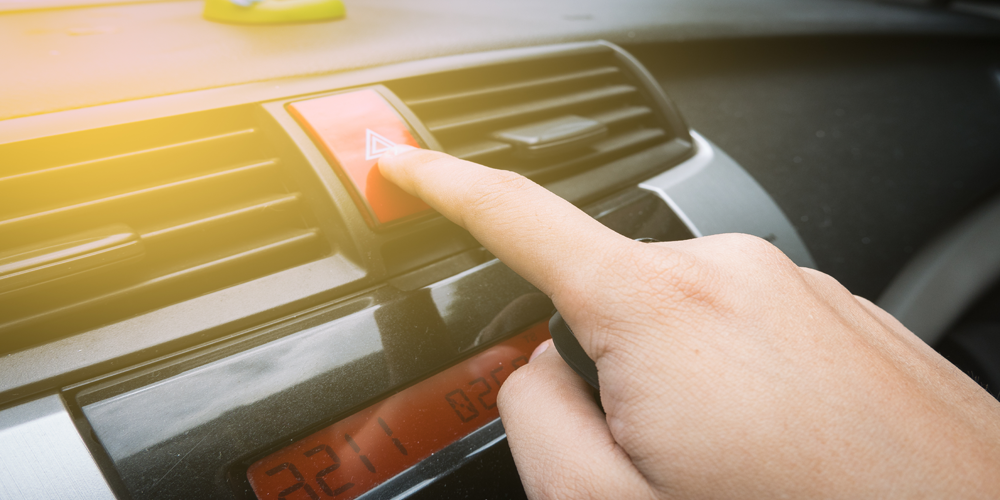Hazard warning lights must be fitted to any car built after 1 April 1986. That’s the law. They are included as part of the annual MOT test and the car will fail if they are missing or don’t work. As the MOT inspection manual states: ‘Hazard warning lamps must operate using only one switch, and with the engine or ignition switch in both the on and off positions’.
Vehicles first used before April 1986 do not need to have hazard warning lights. They are also not required on vehicles that:
>>> Do not have front and rear position lamps (lights)
>>> Have front and rear position lamps that are permanently disconnected, painted over or masked
>>> Were first used before 1 January 1936
Tricycles and quadricycles classed as mopeds also don’t need hazard warning lights. Only ‘bodied’ mopeds must have direction indicators.
What are hazard warning lights for?
The Highway Code states that hazard warning lights ‘may be used when your vehicle is stationary, to warn that is temporarily obstructing traffic. Never use them as an excuse for dangerous or illegal parking’.
To quote again from the guide: ‘You MUST NOT use hazard warning lights while driving or being towed unless you are on a motorway or unrestricted dual carriageway and you need to warn drivers behind you of a hazard or obstruction ahead. Only use them for long enough to ensure that your warning has been observed.’
Examples include stationary traffic on a motorway. If you find yourself at the back of a queue, with fast-moving vehicles approaching from behind, your hazard warning lights could provide an early warning for other drivers.
Similarly, they can be useful on a bend or brow of a hill where visibility is reduced. Be sure to switch them off when your presence has been observed.
Is it illegal to drive with hazard lights on?
There’s no set penalty or fine for driving with your hazard lights on, but you could be charged with careless driving if it leads to an accident. This could mean a fine of £100 and three points on your driving licence.
Careless driving (driving without due care and attention) carries a maximum penalty of disqualification or nine points, plus a fine of up to £2,500. However, it’s highly unlikely that a hazard warning light offence would result in severe punishment.
The problem is that fellow motorists will be unable to see your turn signals if the hazard warning lights are in use.
How do I turn hazard lights on?
The hazard light warning switch is likely to be a white triangle on a red background or a red triangle on a black background. Common places for it to be located include the top of the dashboard near the air vents, on the centre console between the front seats, or behind the steering wheel.
The switch and green indicator warning lights will flash when they are in use, and you’ll also hear the ticking sound of the turn signals.
Neil Greig, IAM RoadSmart director of policy and research, told the Sun: “According to Rule 116 in the Highway Code, hazard warning lights may be used when your vehicle is stationary, to warn that it is temporarily obstructing traffic.
“It is a grey area because you can use them when moving to alert other traffic to a hazard ahead and they don’t define ‘only use them long enough to ensure that your warning has been observed’, so our advice would be to use them sensibly and for the police to be as flexible as possible in enforcing the regulations.
“Hazard warning lights should not be used when they could cause confusion. If you are driving very slowly due to a car problem and are about to stop, ensure you switch them off if you are carrying out a manoeuvre, such as turning left or right.
“It would be ironic if your use of hazard warning lights became the cause of a collision. If you were fined, it would most likely be £100, plus three points fixed penalty, for careless driving.”






















